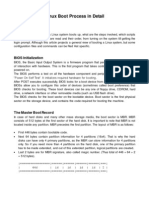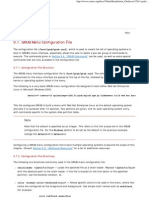0% found this document useful (0 votes)
12 views2 pagesKernel Parameters
Kernel parameters are settings that influence the Linux kernel's behavior, affecting performance, compatibility, debugging, and security. They can be configured at boot time, dynamically using sysctl, or through the /proc filesystem. Common parameters include those for performance management, security features like ASLR, and networking settings.
Uploaded by
Dinesh SutiharCopyright
© © All Rights Reserved
We take content rights seriously. If you suspect this is your content, claim it here.
Available Formats
Download as DOCX, PDF, TXT or read online on Scribd
0% found this document useful (0 votes)
12 views2 pagesKernel Parameters
Kernel parameters are settings that influence the Linux kernel's behavior, affecting performance, compatibility, debugging, and security. They can be configured at boot time, dynamically using sysctl, or through the /proc filesystem. Common parameters include those for performance management, security features like ASLR, and networking settings.
Uploaded by
Dinesh SutiharCopyright
© © All Rights Reserved
We take content rights seriously. If you suspect this is your content, claim it here.
Available Formats
Download as DOCX, PDF, TXT or read online on Scribd
/ 2



























































